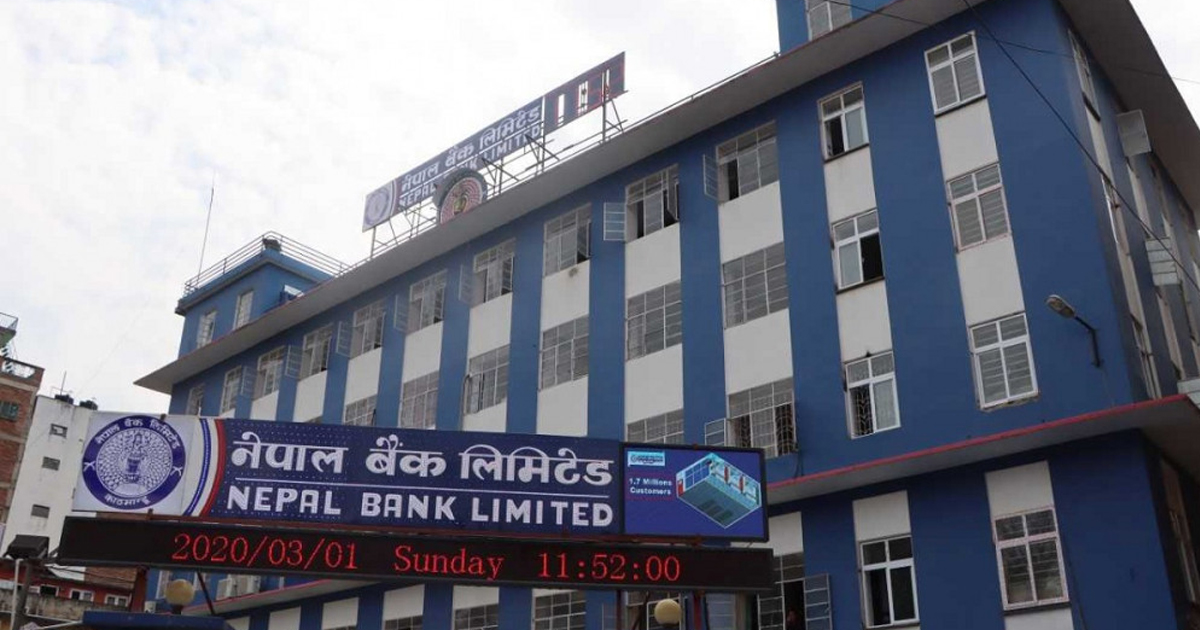Kathmandu: Nepal Bank Limited has posted a record net profit of Rs 3.77 billion in the fiscal year 2024/25, marking a staggering 133-fold increase compared to the previous fiscal year’s profit of Rs 28.4 million.
The surge in earnings was driven by a notable rise in net interest income, modest improvement in other income streams, and a significant drop in loan loss provisioning. Net interest income rose by 16.82 percent to Rs 10.87 billion, while net fees and commission income increased by 6.08 percent to Rs 1.18 billion. Net trading and other operating income also saw slight gains, reaching Rs 680 million.
Loan loss provisioning fell sharply from Rs 4.75 billion in FY 2023/24 to Rs 1.13 billion in FY 2024/25, boosting operating earnings. As a result, the bank’s net operating income jumped 93.98 percent to Rs 10.81 billion, and operating profit soared 692.38 percent to Rs 5.42 billion, compared to just Rs 683.5 million in the previous year.
Despite the record profit, Nepal Bank is unlikely to distribute dividends. The bank continues to carry accumulated losses due to large pension obligations for retired employees. Although funds exist in the retirement fund, poor investment returns—particularly during periods of low interest rates—have left pension income shortfalls.
The bank recorded an actuarial loss, moving Rs 1.86 billion into regulatory reserves, along with an additional Rs 64 million for unpaid interest. Consequently, distributable profit stands at only Rs 516 million, with accumulated losses reduced to Rs 449.1 million.
With paid-up capital at Rs 14.69 billion, earnings per share rose from Rs 0.19 to Rs 25.68. The bank holds a reserve fund of Rs 23.93 billion, and its net worth per share stood at Rs 259.81 as of the end of Ashad (mid-July). The price-to-earnings ratio was reported at 11.35.
In the past fiscal year, Nepal Bank expanded deposits by nearly Rs 49 billion to Rs 332.02 billion and increased lending by Rs 27 billion to Rs 221.7 billion, resulting in a credit-to-deposit ratio of just 70.72 percent. High liquidity pressure has prevented net interest income from rising in proportion to loan growth.
As of mid-July, the bank’s core capital adequacy ratio stood at 10.05 percent, with a total capital adequacy ratio of 13.06 percent. Non-performing loans inched up from 4.33 percent to 4.47 percent, while the base rate dropped to 5.58 percent.



Comment Here